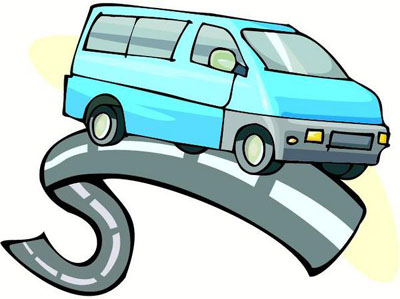

Chapter
7
Time requirement of chapter: 45 minutes
DRIVING RISK CONTROL
In this chapter of the program, participants will learn and appreciate the significance of environmental factors in collision causation. Additional Chapter 7 will cover special hazards and provide information on required vehicle equipment and motorcycle licensing.
To read video transcript CLICK HERE |
Speed and Force:
There is a direct relationship between speed and the force of impact. The greater the speed of a vehicle, the greater the force of the impact.
|
The greater the weight of a vehicle, the greater the force of impact will be in a collision. Therefore, if two vehicles are both going 30 mph - one is a passenger vehicle and the other is a tractor trailer - the tractor trailer will have the greater force of impact. In contrast, if the vehicles are the same weight, the vehicle with the higher speed will have the greater force of impact. The shorter the distance a vehicle travels before a collision the greater the force will be upon impact. |
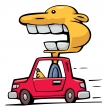 |
When dealing with speed, there is a mathematical equation called the squared
relationship. It basically states three (3) times the speed will have nine (9) times
the force of impact. Four (4) times the speed will have sixteen times the force
of impact. Five (5) times the speed will have twenty-five (25) times the force of impact
and so on. This is called the squared relationship: 32 / 42 / 52
Concept of the 2nd and 3rd collisions:
|
In a collision, at the exact moment of impact, there is the release of energy as the vehicle strikes another vehicle or another object. Prior to impact, the vehicle and everything inside the vehicle is traveling at whatever speed the vehicle had been going. As the collision continues, the vehicle gradually loses energy. However, the vehicle occupants and any others items in the vehicle continue to move forward at the same speed the vehicle had been travelling prior to impact. If the occupants are wearing safety belts, the belts begin to deform by stretching,
and will decelerate the passenger in a comparatively gentle manner. Unbelted
passengers continue forward at speed, striking the interior of the vehicle and may
be ejected from the vehicle through the windshield or windows.
Unsecured objects from back seat and rear window deck continue
forward at the speed the vehicle was traveling prior to impact with enough
force to cause serious injury or death. This is known as the 2nd collision. |
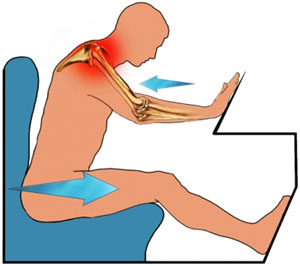 |
Resource: Governor's Office of Highway Safety, Speed and Speed Limits, Atlanta Georgia, October 1998
Energy Absorption:
When driving a vehicle, it is developing kinetic energy. Kinetic energy is the energy of motion. Basically, the faster a vehicle moves, the more energy of motion it is generating. Therefore, the more energy of motion their vehicle has, the more time and distance it will take the vehicle to stop. When a moving vehicle hits another object it is called the force of impact.
|
There are three factors that affect the force of impact.
Many of today’s vehicles absorb energy in a collision by design; the way they deform or “crush” when they are in a crash. The energy of the collision is dissipated when the metal of the vehicle deforms. Modern vehicles include a number of features to help in absorbing energy created in a crash. Vehicle manufacturers build in tempered safety-glass windows, impact resistant bumpers, protective padding on the dashboard, energy absorbing steering columns, and childproof door locks. Occupant safety devices include the safety restraint system, air bags, head rest and automatic door locks. |
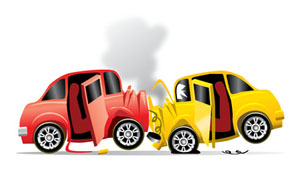 |
Outside of the vehicle, today's drivers will find guardrails, large sand or water canisters placed at risk areas, as a means to reduce impact forces. There are computer controlled traffic signals and pedestrian crosswalk signals.
The Effect of Direction of Impact:
The direction of impact in a collision can greatly affect the severity of the injuries. Head-on collisions are the most serious type of crash. Collisions where the sides of the vehicle are struck can also lead to serious injuries, depending on what part of the vehicle is struck, and if there were any occupants in that area of the vehicle.
Resource: American Automobile Association, Responsible Driving, Chapters 7 and 13, Pages 120, 121, 122, 254, 255, 265, 266
Responding to Hazardous Weather Conditions:
There will be times when a driver will encounter less than favorable driving conditions. Safe and defensive drivers know the procedures for operating a motor vehicle in hazardous weather conditions. Prepare by checking windshield wipers and tire tread.
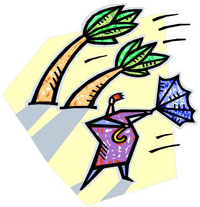 |
There are several things a driver can do when confronted with rain. The first and most important is to slow down below the posted speed limit. Second, a driver should increase their vehicle’s following distance. Driving in the tracks of the vehicle ahead may also help in controlling the vehicle in the rain since this area has been somewhat dried by the tires of the preceding vehicle. Having good tires which are properly inflated provides the vehicle with better traction on wet surfaces. The vehicle's low beam headlights should be activated to make the vehicle more visible to other drivers. Having a clean windshield and good windshield wipers will help the driver see the roadway and other vehicles more clearly. Finally, a driver should not make fast starts or quick stops or make turns at too high a rate of speed with the vehicle. |
Heavy rains may cause water to accumulate in puddles on the roadway surfaces. Entering into these puddles will many times cause the vehicle to pull in the direction of the water.
To prevent the sudden jerking of the steering wheel, slow down before entering any standing water. Maintain firm control of the vehicle's steering wheel. If the vehicle pulls to one side, be careful not to over-correct, which may cause the vehicle to travel into an opposing lane of travel or off the road. In some Southwestern states, the flow of water from mountain rains may actually build up enough force to push vehicles along with the water.
These areas are known as washes. Never attempt to drive through a wash area when there is water flowing. Do not cross any road where water is flowing over the pavement due to flooding - your vehicle may leave the road.
Hydroplaning is a natural phenomenon whereby water forms a very thin, but very strong, film on the highway. This film can actually support a vehicle. The tires may have little or absolutely no contact with the roadway. A vehicle may hydroplane at speeds as low as 35 mph and in water one-eighth of an inch deep. Vehicles will normally hydroplane at speeds above 50 mph, with little or no ability to steer.
So when driving on slick roadways, slow down and keep both hands on the vehicle
steering wheel. Do not make quick starts and stops.
| When driving in snow and/or ice, slow down. Activate the vehicles low beam headlights. Never use the vehicle's bright lights. Snow is dense in nature and bright lights will actually reflect back into a driver’s eyes. Keep the vehicle windows clean and have good windshield wipers. Drive at a steady speed and do not make abrupt stops or starts. Remember bridges and overpasses freeze faster than the main highway surface, so slow down and do not make lane changes in these areas. If your vehicle does get stuck in the snow, make sure the wheels are straight and accelerate slowing so as not to spin the tires. Having salt and sand available along with a shovel is recommended. Having a snow kit with non-perishable food, water, blanket and warm clothing, a candle and water-proof matches are all items which can save lives. To prevent carbon monoxide poisoning while waiting for assistance, make sure the area around exhaust pipe is clear of snow and a window is open slightly for fresh air. | 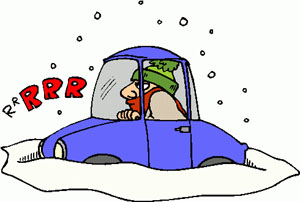 |
Driving a vehicle with a trailer, driving a van, suv or any other “high-profile” vehicle in high winds can be extremely dangerous. Winds may actually move vehicles from side to side. Slowing down can help in preventing the loss of control due to the impact of wind upon these vehicles. It is important to keep both hands on the steering wheel. When driving in high winds, give vehicles towing trailers and large vehicles plenty of space.
Other than natural wind, large vehicles may also be a source of wind gusts which can cause a driver to lose control of their vehicle. Never drive next to large vehicles, be careful when passing or when they are passing your vehicle.
When encountering fog while driving, first turn on the vehicles' low beam headlights. Like snow, fog is dense and bright head lights can reflect back into a driver’s eyes. Stay in the right lane and slow down. Increase your following distance. Never turn on the vehicle's emergency flashing lights. These lights are strictly for disabled vehicle that are stopped and on the side of the road - not in motion. Never attempt to pass another vehicle. When entering fog, do not stop suddenly, slow down gradually. If you can’t see the roadway edge, pull off on the right and well out of the traffic lane and then turn on the emergency flashers. Wait until visibility improves before you continue.
Smoke, smog, sand and dust can all cause visibility problems. Use the same procedures for these hazards as for driving in the fog.
 |
While operating a vehicle in a hot climate, pre-planning is the best prevention. Keep your vehicle from overheating by making sure your radiator is working properly. Check fluid levels frequently. Make sure the vehicles' tires are properly inflated. If possible, travel during morning and early evening hours. When driving in hot weather it’s particularly important to watch the vehicle warning lights and gauges. If the vehicle temperature gauge moves up, turn off the air conditioner and turn on the vehicle’s heater to its highest and hottest setting. It may be uncomfortable, but it will help draw some of the heat away from the engine. When stopped in traffic put the car in “park” and lightly step on the gas to help circulate coolant. If the temperature light goes on or if the gauge enters the red zone, immediately pull off the road to a safe spot, well away from traffic. |
Do not drive any farther, not even to the next exit. Call for roadside assistance, or *FPH in Florida. Driving with an overheated engine can cause serious damage to the engine. Never attempt to remove the radiator cap while the vehicle is still over-heated. The pressurized coolant is extremely hot and will spray out with great force. Do not pour water over the radiator or engine, since a dramatic change in temperature could cause damage. After the engine cools, add a 50-50 mix of coolant and water to the reservoir to bring it up to its proper level. Carry extra water and if possible keep a cell phone available and charged.
Resources: http://news.carjunky.com/car_safety/top_10_tips_for_foul_weather_driving_921.shtml, http://www.aesic.com/safety%5Cpdf%5CAE-LCT109AdverseWeather.pdf.
Required Vehicle Safety Equipment:
For most people, a vehicle is a major investment, second only to buying a house. By carefully maintaining their vehicle, an owner can increase driving safety. Good vehicle maintenance can help reduce pollution. Vehicle maintenance also lowers the cost of operating the vehicle. A well maintained vehicle will most likely need fewer repairs in the long run. A well maintained vehicle will normally have a higher re-sale value and will normally result in a higher return rate. Lastly, a well maintained vehicle may mean fewer roadside emergencies.
No matter how good a driver might be, they are not really safe unless their
vehicle is in a safe operating condition. Florida law requires all vehicles
being used on the roadways to meet minimum safety standards.
All vehicle tires are required to have a minimum of 2/32nds or 1/16th of an inch tread of tire. Bald or unevenly worn tires can cause the loss of control especially on wet and slippery roads. Tires should be checked weekly to ensure they are properly inflated.
| All motor vehicles are required to be equipped with at least two headlamps
with at least one on each side of the front of the motor vehicle, and shall
show a white light. An object, material, or covering that alters the headlamp’s
light color may not be placed, displayed, installed, affixed, or applied
over a headlamp. All headlamps shall be located at a height of not more
than 54 inches nor less than 24 inches. Vehicle headlights on the low beam setting should illuminate out to a distance of 150 feet and be visible from 1,000 feet. High beams are to illuminate for a distance of 450 feet and be visible from 1,000 feet. Florida law requires the use of a vehicles' low beam lights during twilight hours or when it is dark, during fog, smoke or rain. Twilight is defined as the time between sunset and full night or between full night and sunrise. |
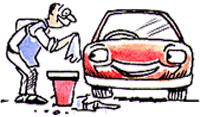 |
Passenger vehicles shall be equipped with two brake systems adequate to control the movement of and to stop and hold such vehicle under all conditions of loading, and on any grade incident to its operation. Each brake system on your passenger vehicle should be able to stop the vehicle from 20 mph within 25 feet. The parking or emergency brake should be strong enough to hold the vehicle on a hill.
All motor vehicles when operated upon a highway shall be equipped with a horn in good working order and capable of emitting sound audible under normal conditions from a distance of not less than 200 feet. Horns are not toys and they are to be used to warn others of potential danger. They are not to be used to grab attention or to make unnecessary noise.
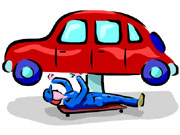 |
Vehicles are required to be equipped with at least two tail-lamps mounted on the rear of the vehicle and shall emit a red light plainly visible from a distance of 1,000 feet to the rear, Either a tail-lamp or a separate lamp shall be so constructed and placed as to illuminate with a white light the rear license plate and render it clearly legible from a distance of 50 feet to the rear. When whashing your car or checking all of the cars' lights - make sure to wipe dust from the license plate light. Directional signals / turn signals - Amber or White (front), Red (rear) should be visible for 500 feet. Every vehicle shall be equipped with a mirror or mirrors on the inside and outside of the vehicle so located as to reflect to the driver a view of the highway for a distance of at least 200 feet to the rear of the motor vehicle. All motor vehicles of not more than 5,000 pounds are required to be equipped with a front and rear bumper. On a passenger vehicle, when measured from the ground, the front can have a maximum height depending on vehicle weight or 22 to 28 inches and the rear bumper can have a height of 22 to 30 inches. |
All vehicles must be equipped with a windshield that consists of safety glazing as required by federal safety-glazing material standards. All windshields shall be equipped with a device for cleaning rain, snow, or other moisture from the windshield. Windshield wipers shall be maintained in good working order.
Resources: http://automechanics.wordpress.com/2008/04/19/the-importance-of-vehicle-maintenance,http://www.deq.state.mi.us/documents/deq-whm-stsw-Tire-Tips-Fact-Sheet.pdf.,Florida State Statutes: 316.220, 316.217, 316.261, 316.262, 316.271, 316.221, 316.294, 316.251 and 316.2952
Florida state Statute 316.272 requires every motor vehicle to at all times be equipped with an exhaust system in good working order and in constant operation, including muffler, manifold pipe, and tail-piping to prevent excessive or unusual noise. No person shall use a muffler cutout, bypass or similar device upon a vehicle on a highway.The engine and power mechanism of every motor vehicle shall be so equipped and adjusted as to prevent the escape of excessive fumes or smoke.A violation of this section is a non-criminal traffic infraction.
Resources: http://www.cdc.gov/co/faqs.htm, http://www.silentshadow.org/carbon-monoxide-in-your-car.html, Florida State Statutes, 316.272
Vehicle maintenance should be a daily activity. It is checking the vehicle on a routine basis. Regular checks of your vehicle and proper maintenance can save you both money and aggravation.
It is recommended a driver check around their vehicle every time before they enter the vehicle. They should check to be sure there are no animals under the vehicle or children that may be playing behind the vehicle. They should look for objects that may be a hazard and check under the vehicle for fresh stains or liquids that could mean some type of leak from one of the vehicle’s systems. Tires should be checked to make sure they are all inflated. At least monthly, check the tire tread depth. The vehicle body can be checked for any damage that may have been caused while they were away from the vehicle. They should make sure all the lights and windows are clean and undamaged.
Every week they should check the vehicle engine oil, radiator coolant, battery connections, and brakes. The horn, headlights, taillights and turn signal lights should be checked at least weekly. On a monthly basis, they should check the vehicle’s belts, hoses, windshield wipers and engine wires. The owner’s manual should be read and checked for the recommended intervals for service and maintenance.
Resource: http://www.direct.gov.uk/en/Motoring/OwningAVehicle/AdviceOnKeepingYourVehicle/DG_4022063, http://www.mto.gov.on.ca/english/dandv/driver/handbook/section5.1.1.shtml, http://www.mto.gov.on.ca/english/dandv/driver/handbook/section5.1.2.shtml, http://www.aaasouth.com/auto_maintenance_guide.asp
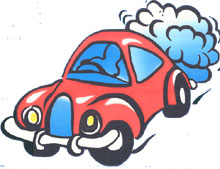 |
Florida law states it is a violation to operate a motor vehicle, which is in such unsafe condition as to endanger any person or property, or which does not contain those parts or is not at all times equipped with such lamps and other equipment in proper condition. By law a police officer may at any time, with reasonable cause, require a driver to stop and submit the vehicle to an inspection. If an officer determines the vehicle to be in a hazardous condition, the officer may require that the vehicle be immediately repaired or removed from use. If there is a violation, an officer may issue a traffic summons for unsafe conditions or improper equipment and may issue an affidavit-of-compliance form. The affidavit-of-compliance form gives a violator 30 days to have the defect repaired. The violator may then present the ticket and affidavit-of-compliance form to any police officer who will confirm the defect has been corrected. |
The violator then must submit the traffic summons and compliance form to the clerk of the court in the county where the original ticket was issued and pay the required fine. If the driver who received the traffic summons fails to repair the defect within the 30 day time limit or they choose not to have the defect repaired, then they must follow the procedures established for the issuance of the traffic citation.
Under Florida State Statute 318.18, any improper equipment violation is a non-moving violation that has a $30.00 fine plus the $6.00 court cost. These fines and court costs are set by state statute and may vary from county to county.
Resources: Florida State Statutes: 316.610, 316.6105, 318.18
Motorcycle Licensing:
Individuals that operate motorcycles know that two wheels provide less stability than four or more wheels; so it is important to learn the proper procedures in the proper handling of a motorcycle. It is also important that other drivers understand the motorcycle and its riders abilities and responsibilities.
Therefore, it is illegal in Florida to operate a motorcycle or motor-scooter, on a public street or highway unless the individual has a valid license that specifically authorizes the operation of such vehicles.
Motorcycle riders should ride in the left-hand portion of a traffic lane. This provides the best visibility and keeps the tires out of the center of the lane where most of the oil, fallen dirt residue and debris is found. Motorcyclists should never travel in the same lane with any 4 wheel or larger vehicle.
 |
Motorcycles can be difficult to see, so the headlight should always be illuminated.
Motorcyclists should wear protective equipment when driving. This should
include over-the-ankle footwear; a crash tested and approved motorcycle
helmet, an approved eye protective device or face shield designed for
use with and as part of an approved motorcycle helmet, long pants, a long
sleeve shirt, and gloves. Since motorcycles are hard to see, drivers must always double check before pulling out into an intersection or roadway. Before making any turn, scan into the on-coming lane to ensure there is no motorcycle approaching. Drivers following motorcycles should increase their following distance. Motorcycles use a clutch and shift to change gears and speed. When down-shifting you may not see a brake light. Use a 4-5 second following distance. |
Persons operating a moped on a roadway at less than the normal speed should ride as close as practicable to the right-hand curb or edge of the roadway, except when passing or making a left turn. When operating a moped with the engine running, a driver normally has all the rights and duties as drivers of any other motor vehicle. When propelling a moped solely by human power, the rider has all the rights and responsibilities as does a bicyclist or pedestrian.
Since mopeds are similar to motorcycles, the same rules for scanning and following distances apply.
Resources: Florida State Statutes, 322.0255, 316.2208, 316.2085,
316.208, 316.209,
http://www.msf-usa.org/downloads/Riding_Tips.pdf, http://www.nhtsa.dot.gov/people/injury/pedbimot/motorcycle/motosafety.html.
|
In Florida, a person over 21 years of age may operate or ride upon a motorcycle without wearing protective headgear securely fastened upon his or her head if such person is covered by an insurance policy providing for at least $10,000 in medical benefits for injuries incurred as a result of a crash while operating or riding on a motorcycle. However, safety professionals always advocate the use of all safety equipment, including helmets, when operating a motorcycle. In Florida, any person desiring to operate any two or three wheel motorcycle, whose engine is more than 50 cc, is required to have a motorcycle endorsement and have at least a regular Class E operator’s driver’s license or possess a motorcycle-only license. As of July 1, 2008, anyone of any age who wishes to obtain a motorcycle endorsement on any class of Florida driver’s license or a motorcycle only license must successfully complete a Florida Basic Rider Education Course. |
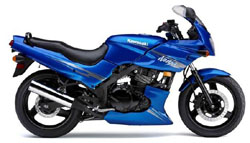 |
The course consists of a minimum of 8 hours of classroom instruction and a minimum of 10 hours of training on a motorcycle. After successfully completing a Basic Rider Course, prospective licensees are not required to submit to further road testing. A list of motorcycle training providers can be found at: http://www.motorcycles.hsmv.state.fl.us/safety1.cfm. In order to legally operate scooters, mopeds, and other 2-3 wheel small engine motor vehicles, at least a Class E driver license and tag/registration are required. Persons 16 and older may operate a moped or ride as a passenger without a helmet. Persons under 16 may not operate a moped, but may ride as a passenger with protective headgear securely fastened upon their head.
Resources: http://www.msf-usa.org, http://www.msf-usa.org/index_new.cfm?spl=2&action=display&pagename=Library,
Florida State Statute: 322.03, 316.208, 316.2085, 322.0255, 322.57
Speed Limits:
Exceeding the posted limit or driving
too fast for conditions are the most prevalent factors contributing to
collisions. Speed is a factor in nearly one-third of all fatal crashes.
Speed-related crashes cost society more than $40.4 billion a year. Many drivers
do not view speeding as an immediate risk to their personal safety or the safety
of others. Yet, speeding reduces a driver’s ability to steer safely around
curves or objects in the roadway, and it extends the distance required to stop a
vehicle in emergency situations.
Collision severity increases with the
speed of the vehicle at impact. Inversely, the effectiveness of restraint
devices like air bags and safety belts, and vehicular construction features such
as crumple zones and side member beams decline as impact speed increases. The
probability of death, disfigurement, or debilitating injury grows with higher
speed at impact. Such consequences double for every 10 mph over 50 mph that a
vehicle travels.
Some drivers consider a few miles an hour over the
posted speed limit as an acceptable risk. If stopped by law enforcement, their
excuse is other drivers are doing it. They believe the worst that can happen to
them is to receive a speeding ticket. Drivers like this are wrong. Maybe even
dead wrong, because driving too fast for conditions or exceeding the posted
speed limit can kill YOU!
The minimum speed limit on all highways that
comprise a part of the National System of Interstate and Defense Highways and
have not fewer than four lanes is 40 miles per hour, except that when the posted
speed limit is 70 miles per hour, the minimum speed limit is 50 miles per hour.
Driving too slowly - so that you block or delay traffic moving at posted or normal
safe speed is against Florida laws.
No school bus shall exceed the posted speed limits, not to exceed 55 miles
per hour at any time.
Speed influences crashes in four basic ways:
CHAPTER 7 QUIZ
| Question 1 | The greater the speed of a vehicle, the greater will be the
force upon impact.
|
||||||||
| Question 2 | When driving in snow and/or ice, slow down. Activate the vehicles
______ beam headlights.
|
||||||||
| Question 3 | The brakes on your passenger vehicle should be able to stop
the vehicle from 20 mph within ____ feet.
|